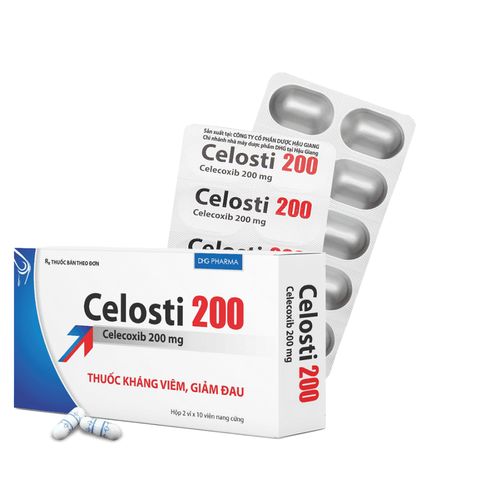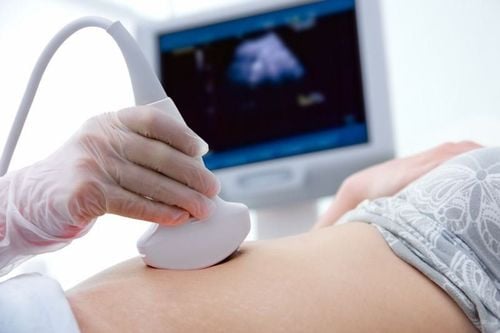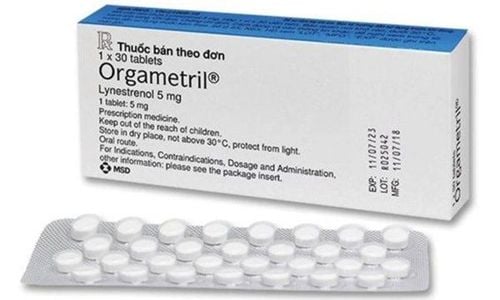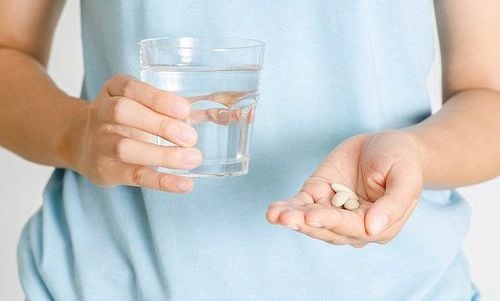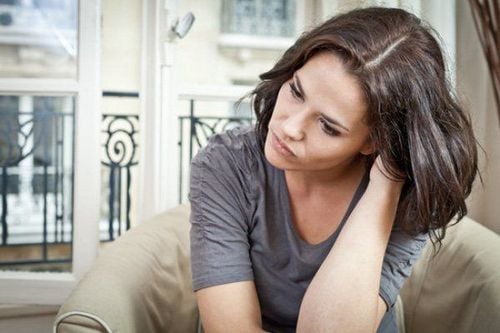This is an automatically translated article.
Lower back pain is a common symptom of conditions related to the menstrual cycle, such as premenstrual syndrome, a condition most women experience during their period. The pain can be aggravated by conditions such as premenstrual dysphoric disorder, dysmenorrhea, or endometriosis.1. Causes of back pain during menstruation
In fact, there are many causes of severe low back pain during a woman's period. Many of these causes are related to certain gynecological conditions.1.1.Premenstrual syndrome (PMS) PMS is a condition that most menstruating people experience. You may experience common symptoms of PMS within a week of your period and will stop when your period begins.
The most common symptoms of PMS will include:
Breast pain Bloating Diarrhea or constipation Abdominal cramps Headache Mood swings or emotional changes In some women, pain Severe low back pain can be a frequent symptom. This is often associated with increased inflammation during menstruation.
In a recent study, women with higher inflammatory markers during their periods were more likely to experience abdominal cramps and back pain than other women.
1.2.Premenstrual dysphoric disorder (PMDD) Premenstrual dysphoric disorder is a more serious condition of premenstrual syndrome (PMS). This disorder is characterized by severe symptoms of PMS, which significantly interferes with and interferes with a woman's daily life, including school, work, and personal relationships.
In general, the most common symptoms of premenstrual dysphoric disorder (PMDD) usually include:
Allergies, acne and other inflammatory conditions Psychological changes, such as anxiety anxiety, depression, or severe mood swings Have neurological symptoms, such as heart palpitations and dizziness Have gastrointestinal symptoms, such as nausea, vomiting, and diarrhea Similar to syndrome In PMDD, an increase in inflammation can lead to severe low back pain in PMDD. Sometimes it can also be a side effect of other PMDD symptoms, such as:
Vomiting Diarrhea Pelvic pressure 1.3. Dysmenorrhea Dysmenorrhoea is a condition characterized by painful episodes menstrual period in women during menstruation. During dysmenorrhea, a woman's uterus will become more contracted than usual. This can cause intense cramping, sometimes leading to weakness.
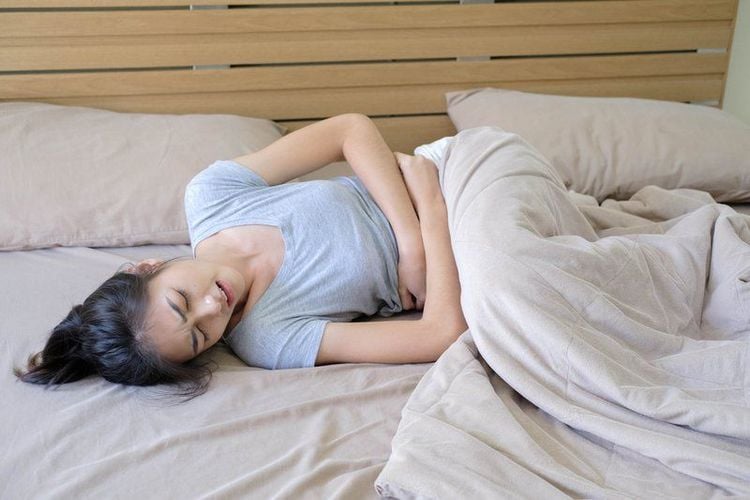
Đau bụng kinh là một tình trạng được đặc trưng bởi các cơn đau bụng kinh ở phụ nữ khi đến kỳ kinh nguyệt
Abdominal pain Pain that radiates down your legs Lower back pain Diarrhea Nausea or vomiting Dizziness or headache Dysmenorrhea cramps may spread radiates throughout the entire lower and upper back. According to a study done on 300 women aged 18-25, researchers found that more than 84% of them had primary dysmenorrhea. Of those 261 participants, about 16% experienced symptoms of lower back pain, which included spasms, sharp pain, sharp pain, and sharp, sudden, stabbing pain.
Primary dysmenorrhea: Primary dysmenorrhea occurs due to cramping during menstruation. Usually, people with primary dysmenorrhea will have pain symptoms at the beginning of their period. During your period, your uterus squeezes to be able to slough off the tissue in the lining of your uterus. In particular, prostaglandin is likened to a chemical messenger similar to the body's hormone, stimulating the uterus to contract more.
However, if the level of prostaglandins is too high, it will make women feel more pain. These contractions can even lead to stomach cramps. You may also feel pain in your lower back that radiates down your legs.
Secondary dysmenorrhea: Secondary dysmenorrhea tends to occur later in a woman's life. This is a period back pain caused by a medical condition or injury. In general, prostaglandins are still the agents that increase the pain level of people with secondary dysmenorrhea. 1.4. Endometriosis Endometriosis is a more serious problem for women when it comes to menstruating. This is a condition characterized by displacement of uterine tissue outside the uterus. These tissues tend to "stray" to other areas of the pelvic region.
Endometriosis can cause problems:
Severe abdominal pain Organ dysfunction Scarring The most common symptoms of endometriosis usually include:
Abdominal pelvic pain Periods Chronic pelvic pain, especially during and after sex Periods that last longer than usual Severe menstrual pain, including lower back pain In general, back pain caused by endometriosis may be different from back pain due to premenstrual syndrome, premenstrual dysphoric disorder, and dysmenorrhea.
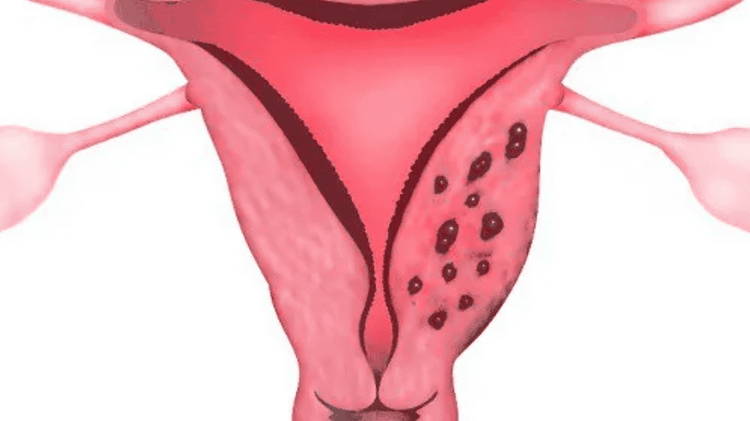
Lạc nội mạc tử cung là một vấn đề nghiêm trọng hơn đối với phụ nữ khi đến kỳ kinh nguyệt
It can be said that endometriosis is a serious condition for a woman's health, so it needs to be diagnosed early to determine the right treatment for the patient.
1.5.Uterine Fibroids Uterine fibroids are noncancerous growths in the uterus. This condition can cause severe pain, including back pain during menstruation.
In general, these fibroids can go away on their own without treatment, even if fibroids cause severe symptoms. However, in certain cases, the doctor may ask the patient to perform surgery to remove them.
1.6.Other conditions Several other underlying conditions can also affect your abdomen and lower back during your period, including:
Uterine fibroids Infection Tumor PID: Infection caused by bacteria that usually start in the uterus and spread to other areas Some other conditions that affect the reproductive organs, such as an abnormal position, including a miscarriage or an ectopic pregnancy In case your low back pain becomes severe, it is best to see a doctor for proper diagnosis and treatment.
2. Diagnosing back pain during menstruation
To diagnose or find the cause of your period back pain, you may need to have a number of different tests, including:Gynecological exam MRI scans, pictures of internal organs Internal ultrasound hysteroscopy: inserting a viewing instrument through the vagina and into the cervical canal, helping to see the inside of the uterus Laparoscopy: inserting a thin tube with a lens and light into the abdominal wall, helping the doctor to detect Tumors in the pelvis and abdomen
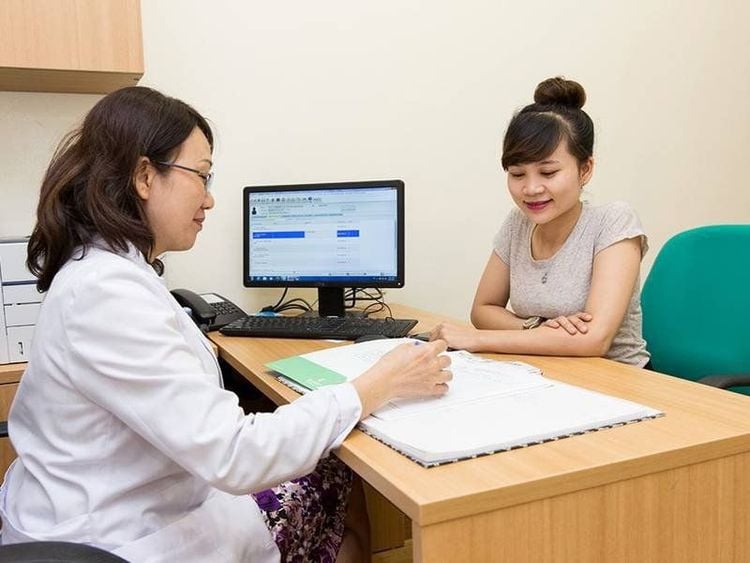
Bạn nên đi khám phụ khoa để được chẩn đoán nguyên nhân gây đau bụng trong kỳ kinh nguyệt
3. Methods to treat back pain during menstruation
Currently, the use of drugs, complementary therapies, and surgery are the most common treatments for severe low back pain in women.3.1.Hormonal birth control This method is often indicated for people with menstrual pain. It includes birth control methods that have a combination of both estrogen and progesterone. As for alternatives that will only include progesterone.
Overall, going through hormonal birth control can significantly reduce the heaviness and pain brought on by menstruation. In addition, it also contributes to the alleviation of the following conditions:
Premenstrual syndrome (PMS) Premenstrual dysphoric disorder (PMDD) Endometriosis Menstrual pain 3.2.Using anti-inflammatory drugs does not steroids (NSAIDs) These medications typically include ibuprofen, aspirin, and naproxen. These are all drugs that effectively reduce pain and inflammation.
According to a recent study, the use of NSAIDs (eg, ibuprofen and naproxen) is extremely effective in reducing menstrual pain, even outperforming aspirin.
3.3.Transcutaneous Electrical Nerve Stimulation (TENS) This is a procedure that uses electrodes to deliver electrical shocks to the skin, which in turn help release endorphins – a substance that has a calming effect. natural pain of the body.
In a study on a 27-year-old female patient, a combination of cervical vertebral movement, heat and TENS significantly reduced moderate and severe low back pain. after 3-4 monthly treatment cycles.
3.4. Acupuncture and acupressure These are two complementary therapies that focus primarily on applying pressure to different areas of the body to relieve pain and promote healing. Studies have shown that 12 sessions of acupuncture can significantly reduce menstrual pain within 1 year. Clinical trials have also found that acupressure can effectively relieve menstrual pain.
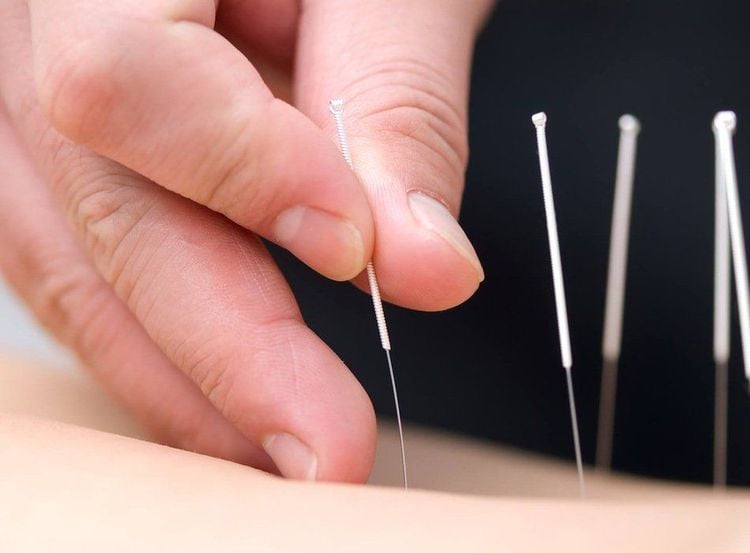
Các nghiên cứu đã cho thấy, qua 12 buổi châm cứu có thể làm giảm đáng kể cơn đau do kinh nguyệt trong vòng 1 năm
If the damage and scarring is large enough, the patient may have to remove the entire uterus, including: uterus, cervix and ovaries.
4. Home Remedies
Home remedies can effectively help you relieve low back pain. Here are some steps you can take:Over-the-counter medications: include aspirin, ibuprofen, or pain relievers to relieve menstrual cramps. Most pain relievers are formulated with capsaicin, a potent anti-inflammatory compound that has the ability to effectively relieve pain. You can use these creams to massage your lower back and relax your muscles. Use heat: you can apply a warm pad to your lower back to relieve pain. Meanwhile, try to relax your back muscles for faster pain relief. Rest and relax: severe low back pain can interfere with your work, it's best to take a reasonable rest time for yourself. Relax with a piece of music, a book, gentle yoga, or a hot bath to stimulate the body's production of endorphins, which naturally fight pain.
5. Some tips and lifestyle to help relieve menstrual back pain
Bad habits like smoking or drinking can make your inflammation worse. In addition, consuming too much caffeine, fats and salty foods also contributes to making your menstrual symptoms worse.Ideally, you should try to drink a lot of water, eat lots of vegetables, fruits and add foods with anti-inflammatory effects to minimize PMS symptoms, such as lower back pain.
In addition, you should also regularly exercise every day to stimulate the body to release natural endorphins, effectively reducing pain. If you find it difficult to perform exercises due to lower back pain, you can try gentler exercises, such as swimming or yoga.
And yet, sex is also an effective pain reliever. Achieving orgasm can help relieve menstrual cramps and relieve low back pain.

Hút thuốc lá và uống rượu có thể khiến tình trạng đau lưng trở nên trầm trọng hơn
6. When to see a doctor?
You should consider seeing your doctor if:Medications do not ease the pain Home care methods are not working There are accompanying symptoms, such as bleeding between periods, vaginal pain or pain during sex Severe pain that prevents you from performing daily activities New or worsening period pain Menstrual bleeding so heavy that you need to constantly change tampons Have symptoms other back or muscle pain, such as pain when walking, difficulty lifting objects or muscle spasms In your case lower abdominal pain, back pain during menstruation is one of the normal physiological manifestations of the body . However, if bleeding is too much, severe abdominal pain, ... you need to immediately go to a reputable medical facility for examination and advice. In addition, you can also visit the hospitals of Vinmec Health System nationwide for detailed advice.
Please dial HOTLINE for more information or register for an appointment HERE. Download MyVinmec app to make appointments faster and to manage your bookings easily.
Article reference source: healthline.com, medicalnewstoday.com




